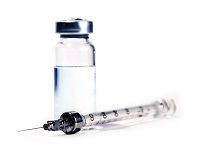Article
CDC: Suburban, Rural Addicts Aren't Getting Enough Clean Needles
Author(s):
Injection drug users who reuse or share syringes spread hepatitis C and HIV. About half of these users live outside the cities, but there are relatively few needle exchange programs available to them, according to the CDC.

At least half of the people who inject drugs illegally in the US live in suburban or rural areas. These drug users are at heightened risk of getting and spreading infectious diseases including AIDS and hepatitis C.
Clean needle programs have reduced HIV incidence among such drug abusers by 80% from 1990 to 2006, according to the US Centers for Disease Control and Prevention (CDC).
But, in a report in the December 11, 2015 edition of Morbidity and Mortality Weekly Report, Don Des Jarlais, PhD of Mount Sinai Beth Israel in New York City and colleagues present findings that show these suburban and rural residents have much less access to clean syringes.
The average injection drug user needs 200 clean syringes a year, the team reports.
There are 204 “syringe service programs” nationally, but they are disproportionately located in cities.
“The modest number of rural and suburban syringe service programs in rural and suburban areas raise concerns that many people who use drugs might not have access,” to them.
HIV outbreaks in Scott County, Indiana and HCV epidemics in other non-urban areas of the US have highlighted the need to expand services to where these potential clients live, as a public health measure.
(For a physician’s account of how a “one-stoplight town in Indiana” responded to an HIV outbreak, go here.)
There were 31.5 million syringes exchanged by urban programs, versus 4.4 million for suburban programs and 2.7 million for rural programs.
Most programs are trying to use “secondary exchange” in which persons attending the program bring in used needs and syringes for other users, but suburban programs surveyed said they have more trouble than urban programs in finding these users.
With concern about the spread of hepatitis C rising, the researchers also note that there is more that syringe programs could do.
Though the centers have the potential to track hepatitis C infection, they tend not to. Though most do HCV testing, fewer than half to HCV referral tracking—33% of rural programs; 43% of suburban programs, and 44% of urban programs.
They said there was “a marked decline in the incidence of HCV infection in selected US locations when targeted risk reduction efforts for the prevention of HIV were implement.” Since “risk reduction” includes starting syringe exchange programs it is likely that such efforts help curb HCV transmission as well.
The survey also looked at the drugs used and the demographics of people who do use the programs.
About two-thirds are male. Rural programs clients are predominately white (80%) and 48% inject heroin while 25% inject methamphetamine and 25% oxycodone.
In suburban programs, 72% are white, 69% inject heroin, 18% methamphetamine, and 13% oxycodone.
In urban programs, 56% are white, 63% inject heroin, 21% inject heroin with cocaine, 15% inject oxycodone.
Hiring or recruiting former drug-users as paid personnel or program volunteers is most popular in suburban programs, with 86% of programs doing that compared to 70% of urban programs and 50% of rural programs.




